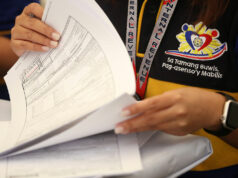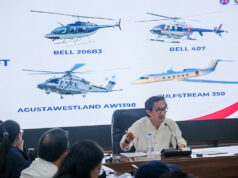Foreign direct investments climb in February
FOREIGN DIRECT investments (FDI) climbed in February on investor optimism over the country’s growth prospects and fundamentals, the Bangko Sentral ng Pilipinas (BSP) reported on Friday.
FDI net inflows rose 20.2% to $746 million in February from $621 million in the same month last year, central bank data showed. February’s climb snapped six straight months of decline in FDI net inflows.
“Investment inflows continued as investors remain confident in the Philippine economy on the back of strong economic growth prospects and sound macroeconomic fundamentals,” the BSP said.
Net equity capital investments, which comprised bulk of the inflows, grew 141.7% to a $233-million inflow in February from $96 million the previous year. The BSP said the increase was due to the 126.3% climb in equity capital placements to $258 million mainly from Japan, China, United States, Singapore, and Switzerland. Withdrawals meanwhile totalled $76 million for the month.
The BSP said equity investments in February mostly went to transportation and storage; financial and insurance; manufacturing; real estate; and professional, scientific and technical industries.
Meanwhile, foreign companies chose to reinvest $79 million of their local earnings in February, 10.1% higher than the previous year’s $69 million and marking the biggest such amount logged since September.
Foreign firms’ loans to their Philippine units meanwhile dropped 4.5% to $435 million in February from $455 million in the same month last year.
For the first two months, however, net inflows stood at $1.355 billion, still lower by 15.7% from $1.607 billion in the same period in 2018 following the sharp decline seen in inflows in January.
The BSP attributed the year-to-date decline to lower net equity capital investments, which declined 67.1% to $188 million in January-February from $569 million in the same period a year ago. This, as placements dropped 31.5% year-on-year to $442 million in the first two months, while withdrawals grew by 236.5% to $255 million.
Equity capital placements during the two-month period came mostly from Japan, China, South Korea, Mauritius, and the United States, the BSP said, and were mainly invested in financial and insurance; transportation and storage; real estate; administrative and support service; and manufacturing industries.
Meanwhile, net placements in debt instruments, which represent capital infusions from parent foreign firms to their subsidiaries in the Philippines, increased 12.9% to $1 billion in the first two months from $896 million the prior year.
Reinvestment of earnings also grew 10.1% to $155 million during the period.
Sought for comment, Security Bank Corp. Chief Economist Robert Dan J. Roces said higher FDI will be seen in the coming months due to S&P Global Ratings’ recent upgrade of the country’s long-term credit rating to “BBB+” from “BBB,” or just a step away from an “A” level grade.
“Investors continue to view the Philippines as a favorable investment destination with the FDI growth. Higher foreign investments dictate market direction so momentum must be sustained,” Mr. Roces said.
“Main hindrances to even higher FDIs include a restrictive investment environment and thus reforms must be able to produce an environment that’s encouraging to foreign investors. Among these are better transportation infrastructure and logistics capability,” Mr. Roces added.
Mr. Roces said that FDI comes in the way of manufacturing and therefore would help in addressing the trade gap.
Michael L. Ricafort, economist at Rizal Commercial Banking Corp. said easing inflation and improved ties with other countries may have boosted FDI net inflows in February.
“The sharp decline in both inflation and in most interest rate benchmarks from among decade-highs in October 2018 may have encouraged more foreign and local investors to increase borrowings/loans in able to finance the establishment of production facilities, leading to more and faster FDIs from these countries,” Mr. Ricafort said in a text message.
“Improved diplomatic ties with Japan, China and the US may have resulted to more FDIs from these countries,” Mr. Ricafort added.
Ruben Carlo O. Asuncion, chief economist at UnionBank of the Philippines, Inc., said: “With the 5.6% Q1 GDP (gross domestic product) result, it is what it is. In the long run, with fiscal reforms waiting to be legislated, FDI inflows is expected to rise further.”
FDIs are a source of capital for the Philippine economy, spurring domestic activity by funding business expansion and generating more jobs.
From a record high of $10.256 billion in 2017, FDIs dropped 4.4% to settle at $9.802 billion last year. Foreign business groups attributed the paler investor appetite to jitters over higher commodity prices, the proposed changes to tax incentives and the global trade tensions.
The BSP sees foreign direct investments reaching $10.2 billion this year. — R.J.N. Ignacio



